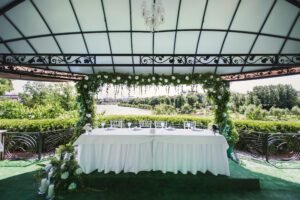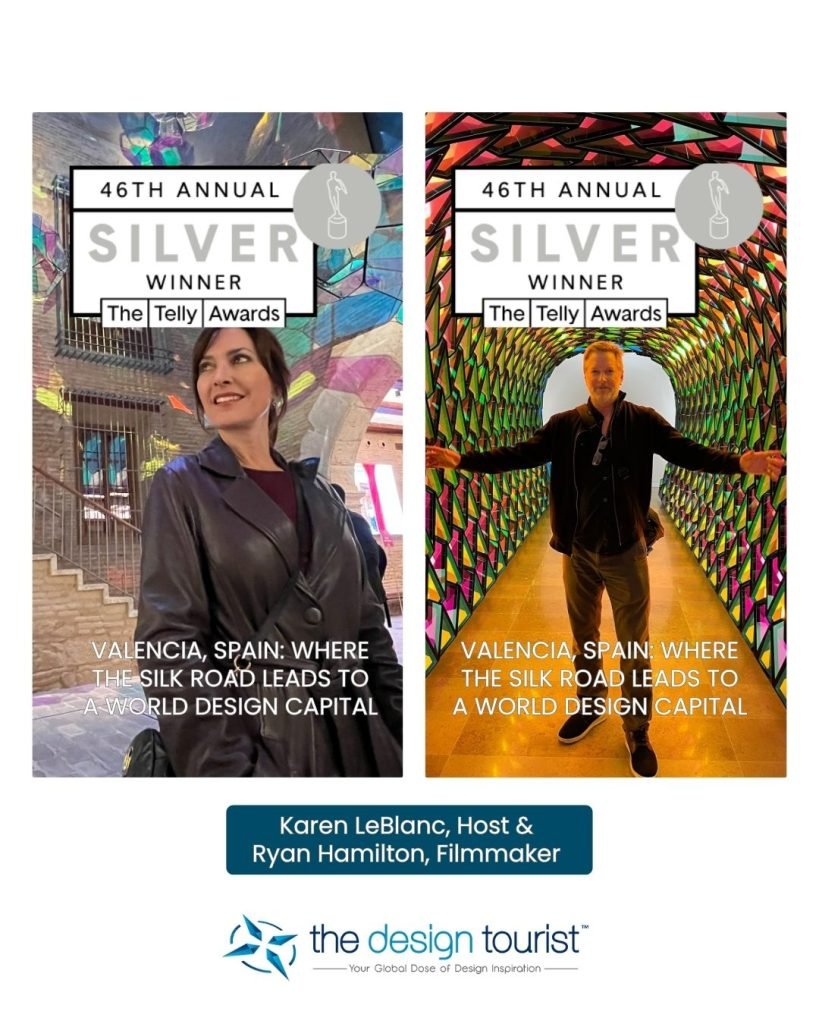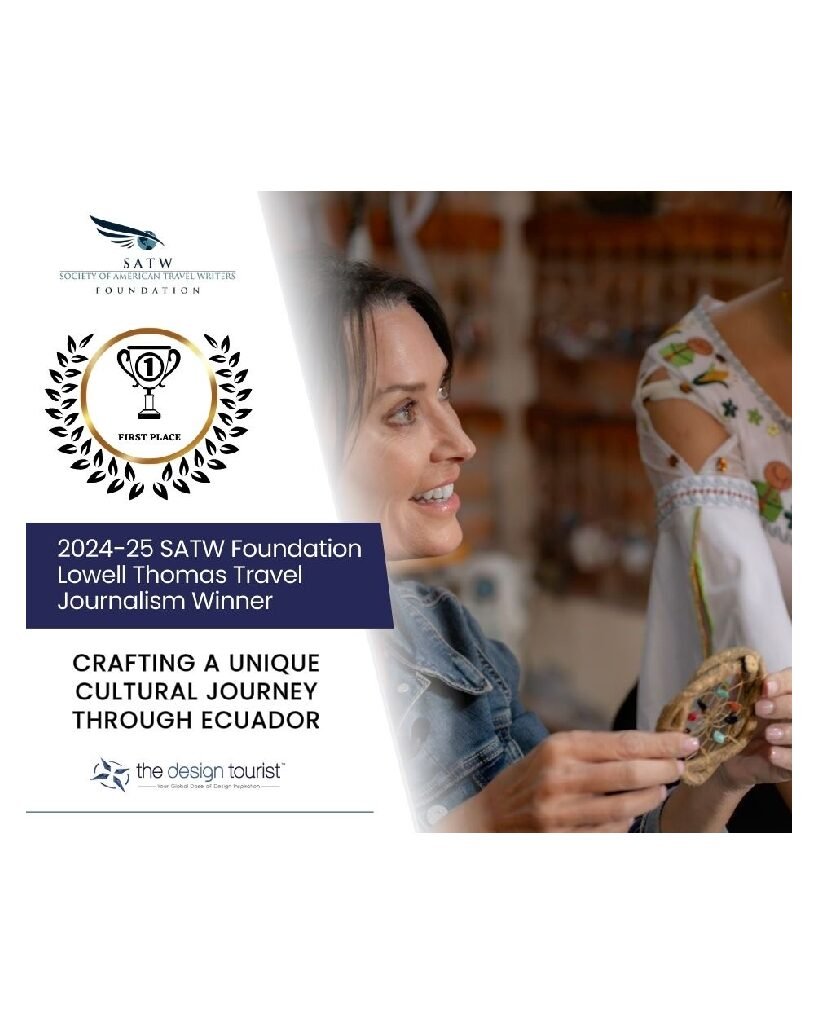Lauscha Germany, is the birthplace of the Christmas ball ornament and home to generations of glassblowers and craftspeople making world-famous, collectible Christmas decorations. I traveled into the Thuringian Forest of Germany to meet the glassblowers of Lauscha, practicing the 150-year-old craft recognized by UNESCO as Intangible Cultural Heritage.

Craftsmanship Revival: A Resilient Heritage
I traveled to Lauscha Germany, to meet with Christmas artisans, including the region’s famous glassblowers recognized by the nationwide register of intangible UNESCO cultural heritage.
Lauscha’s claim to fame as the cradle of the Christmas tree ball is deeply intertwined with its history. Knowing the origin of Christmas balls, you’ll cherish imparting this historical charm to your next Christmas tree decoration.
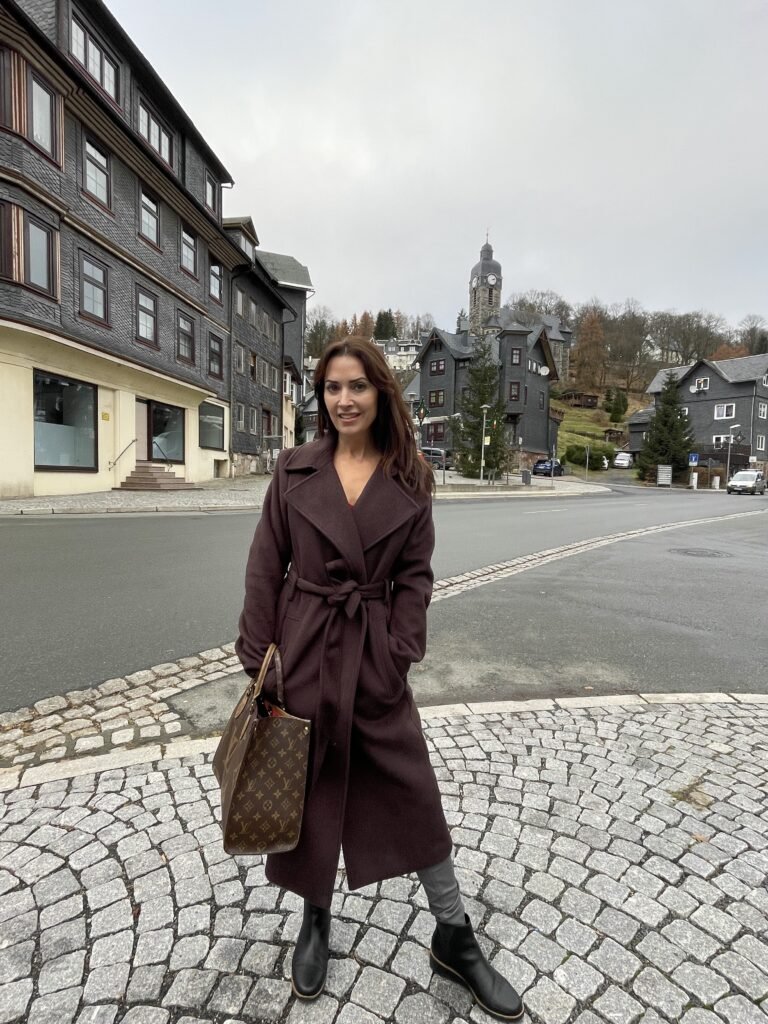
After the Second World War, the region found itself in East Germany under Soviet rule. Many families lost their businesses to the communist state, and local craft workshops ceased production. However, the art of glassblowing endured. Even during the challenging times, craftspeople fought to keep their skills alive, passing on time-honored techniques to new generations.
Today, Lauscha Germany stands as a testament to the perseverance and passion of its craftspeople. Visitors are invited to witness the creativity at its source, experiencing the art of glassblowing that has survived and thrived once again.
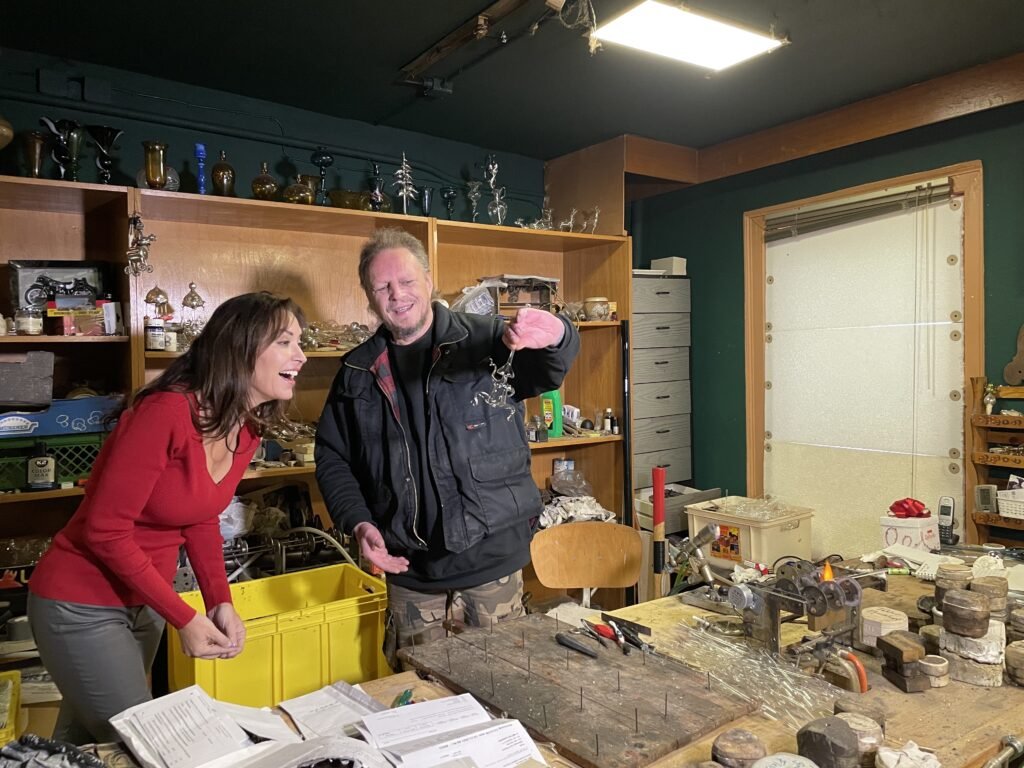
The Artistry of Glassblower Veit Hartleb
In my journey through Lauscha Germany, I had the privilege of visiting the workshop of Veit Hartleb, a third-generation glassblower. Veit, who learned the craft from his grandfather and father, creates mesmerizing Christmas tree decorations by blowing into molten glass tubes. Veit is a trained art glassblower, who intuitively works with the glass over an open flame reaching temperatures of 800 degrees. His skill, combining art and science, results in freeform shapes that capture the essence of holiday characters and icons.
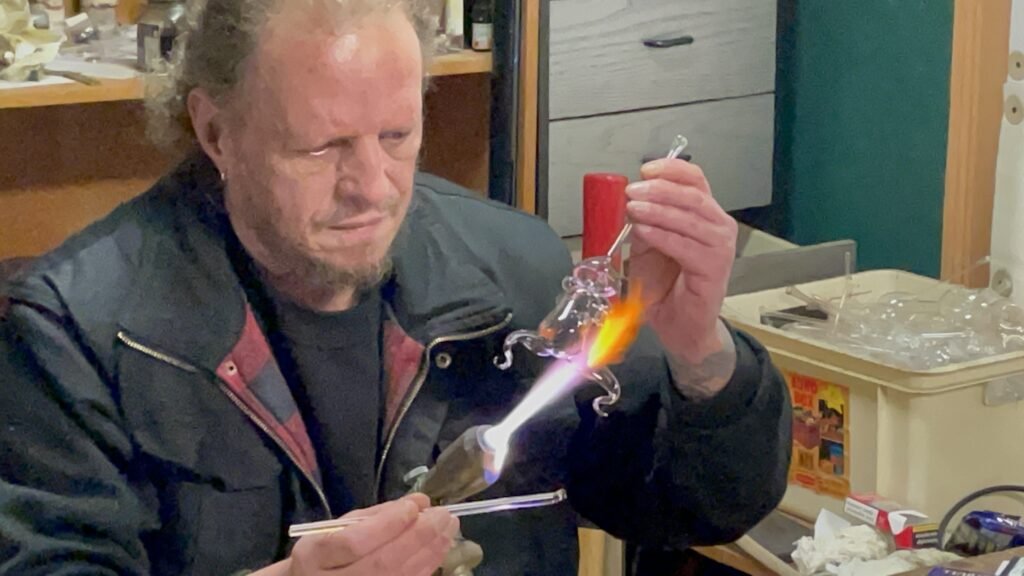
The workshop is not just a place of creation but a celebration of craftsmanship, where Veit’s wife meticulously hand-paints each ornament. It’s a symphony of tradition and creativity, where every piece tells a story of Lauscha’s enduring glassblowing legacy.
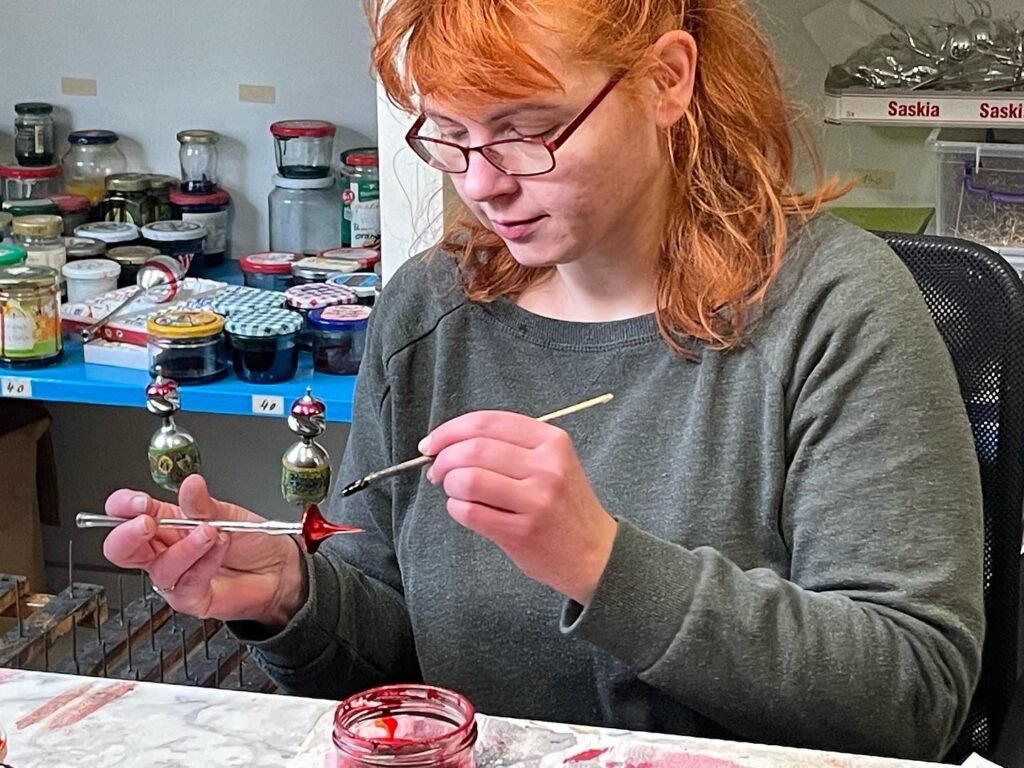
The Silver Lining: Krebs Glass Lauscha Workshop
At the Krebs Glass Lauscha workshop, I delved into the intricate process of creating mouth-blown glass ornaments. I meet another glassblower heating glass tubes over an open flame, blowing the viscous glass into molds to craft delicate ornaments.
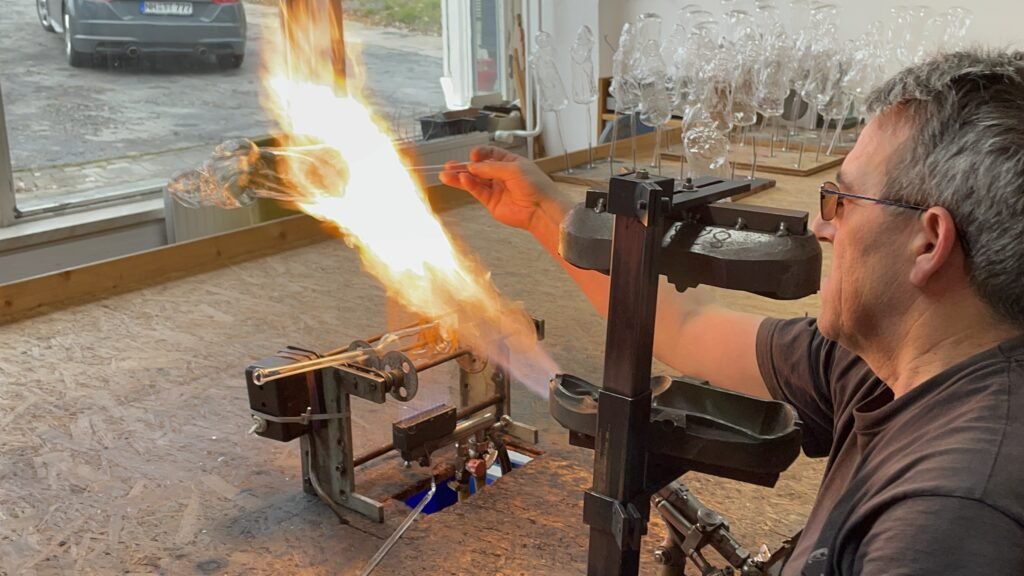
What follows is a fascinating silvering process, where the ornaments are coated with a silver nitrate solution, adding a touch of elegance to each piece.

Next, I go shopping at Krebs Glas Lauscha showroom is a visual feast open to the public, displaying over 5,000 styles of glass Christmas ornaments.

The thriving glassmaking industry owes its success to the abundant raw materials from the Thuringian forest, including sand, wood ash, and lime. Thuringian glass, renowned for its green tint, reflects the rich iron content of local sand and embedded bubbles.
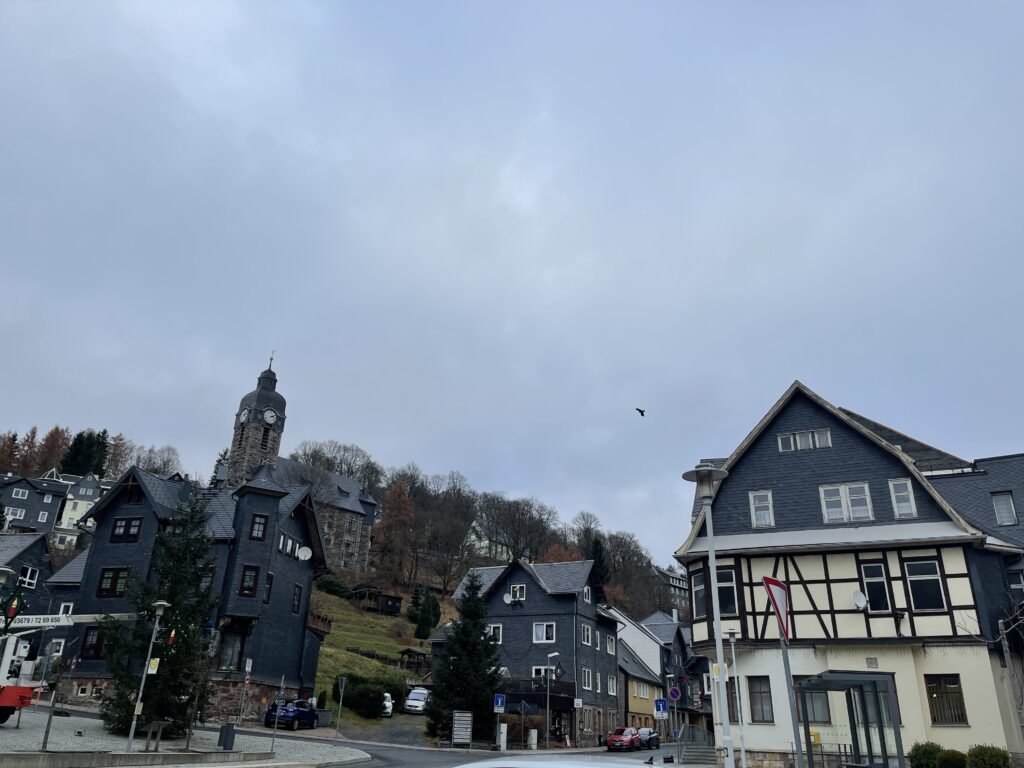
From Glass to Paper: Marolin’s Timeless Figurines
Lauscha Germany glass production traces its roots to the 18th century and gained momentum with Ludwig Müller-Uri’s innovations in the 1830s. What began as the production of hollow glass beads evolved into the creation of glass Christmas tree ornaments.
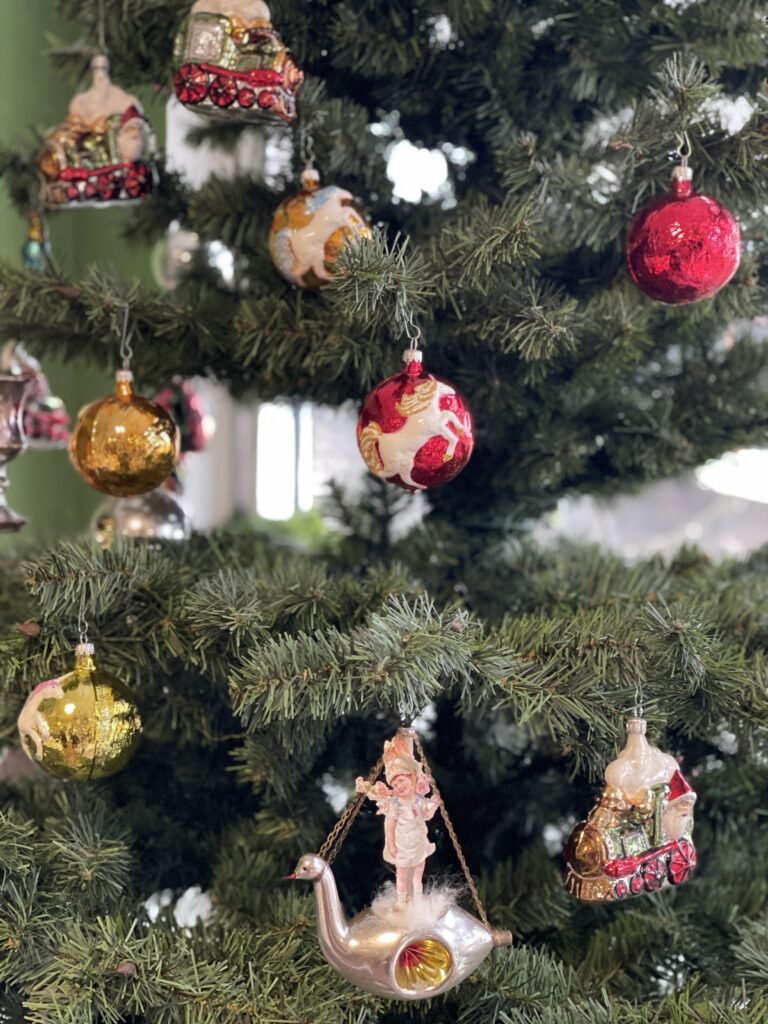
These ornaments gained worldwide fame in the 1880s when they found their way into Woolworth stores, discovered by Mr. F.W. Woolworth during a visit to Germany.
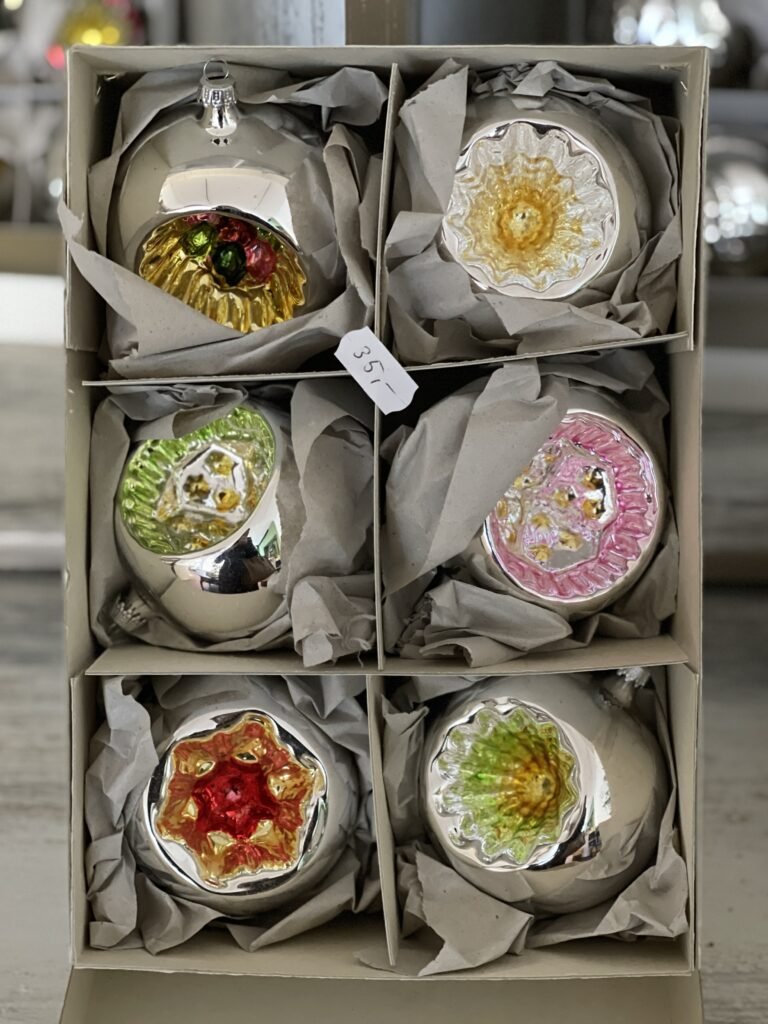
In 1867, the first glass factory, Lauschaer Glasanstalt, introduced a silver-plating process to glass ornaments. To learn more about the history of Lauscha’s glassmaking legacy, I suggest visiting the Lauscha Germany Museum of Glass Art.
In the neighboring village Steinach, I visited the Marolin factory and museum, known for its handcrafted and collectible paper mache figurines. Richard Mar founded Marolin in 1900, naming the company after a secret paper mache recipe he invented and used to create nativity figurines with a porcelain-like finish.
Marolin remains in the family and operates as a factory, museum, and shop on the site of Mahr’s original family home.
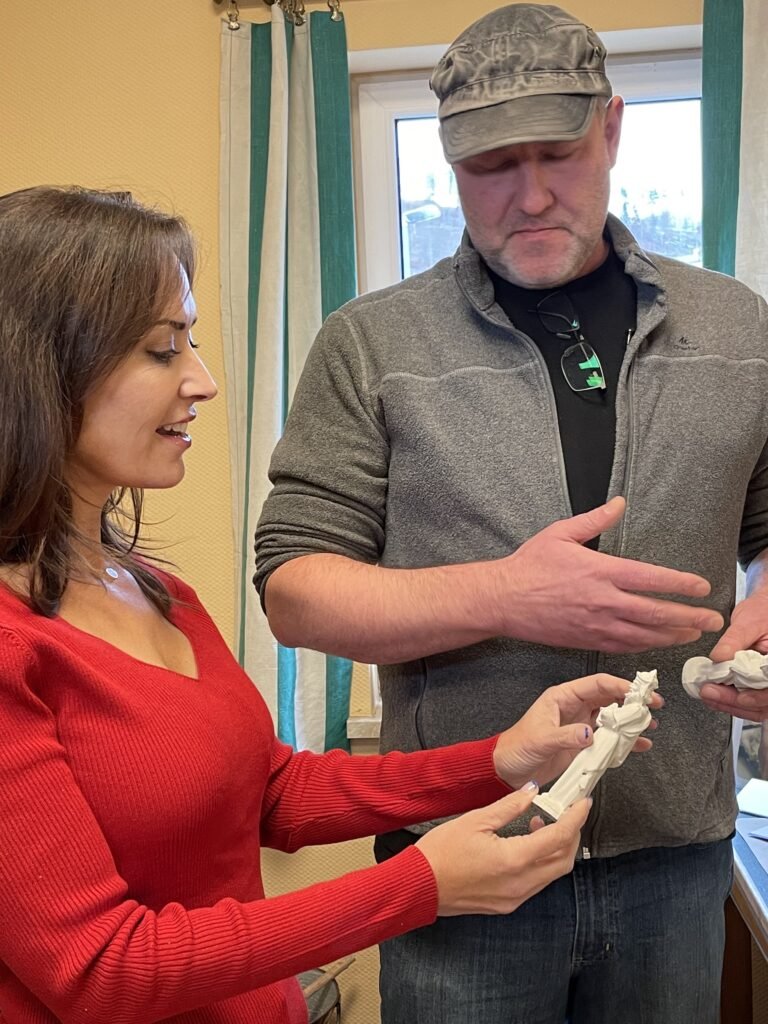
The company employs local artisans who cast, assemble, and paint each figurine by hand using century-old techniques.
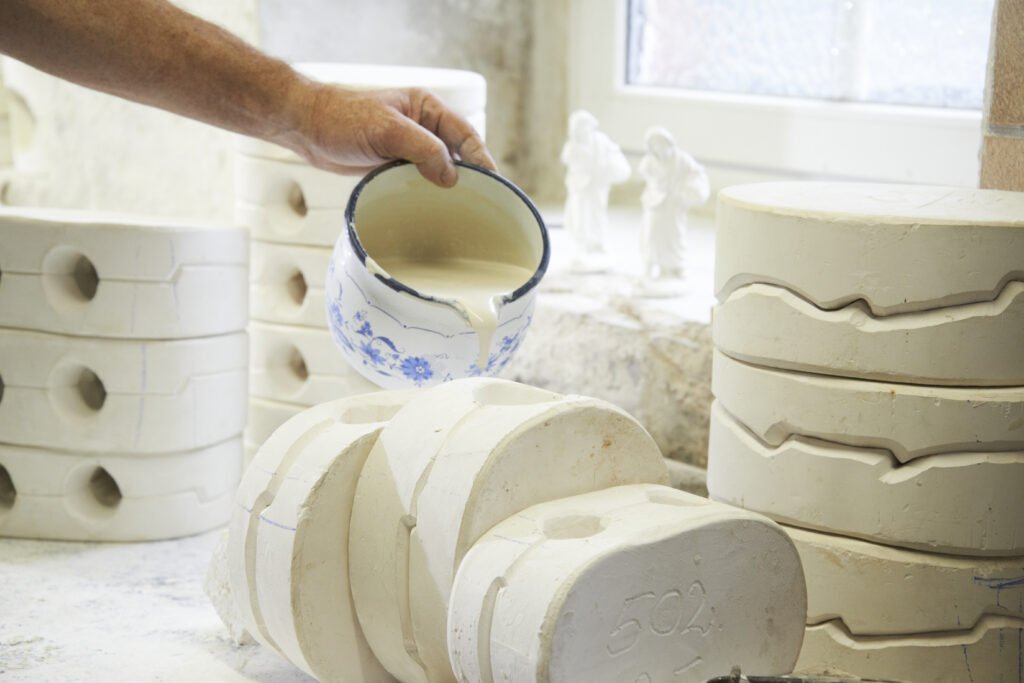
Marolin originally produced nativity and religious figurines, evolving its collection to include more than 2000 figurines such as fairytale characters, animals, and other holiday icons.
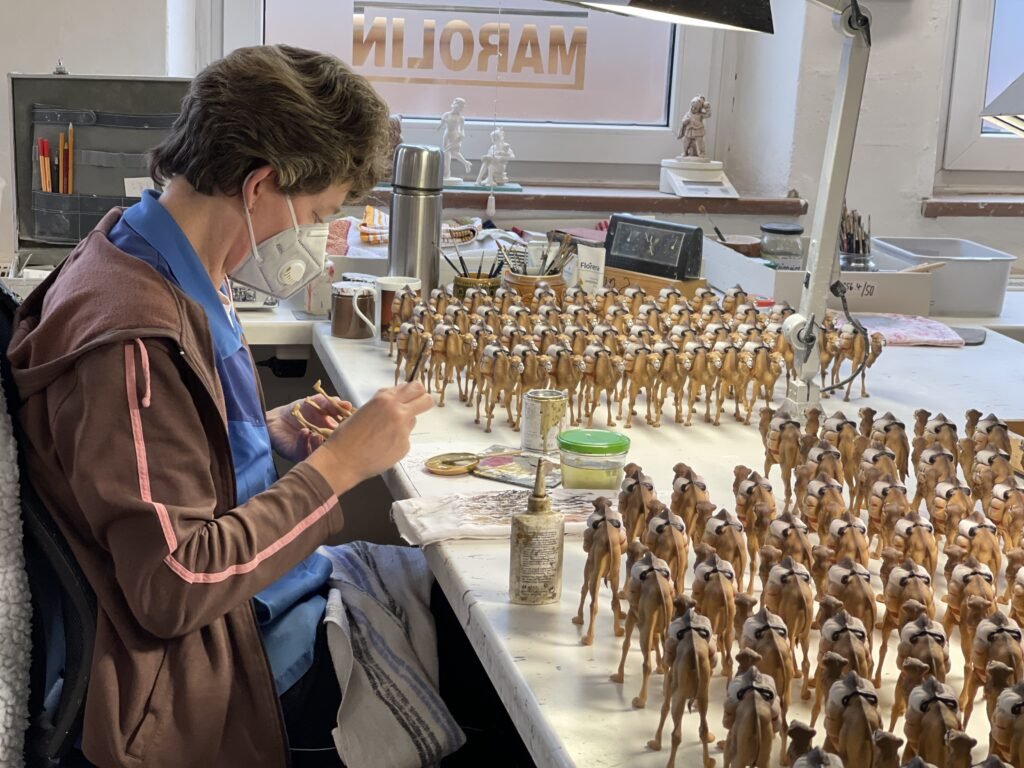
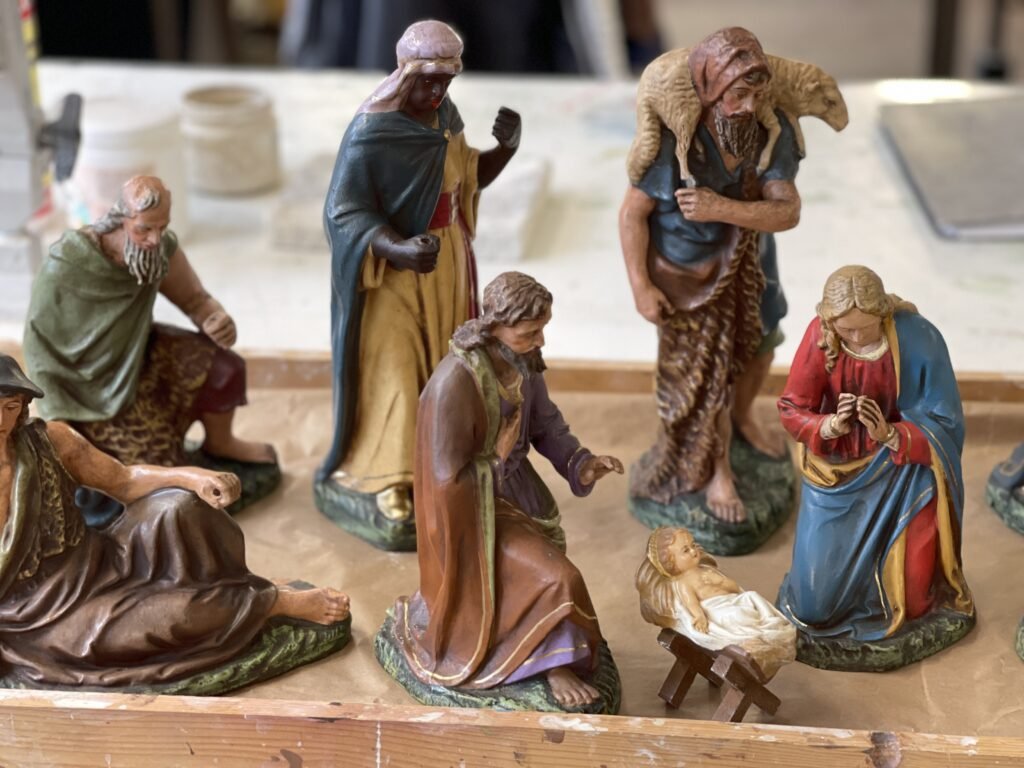
The front of the factory is open to the public to shop at the figurine store and tour the museum, which chronicles the perseverance of this paper mache maker.
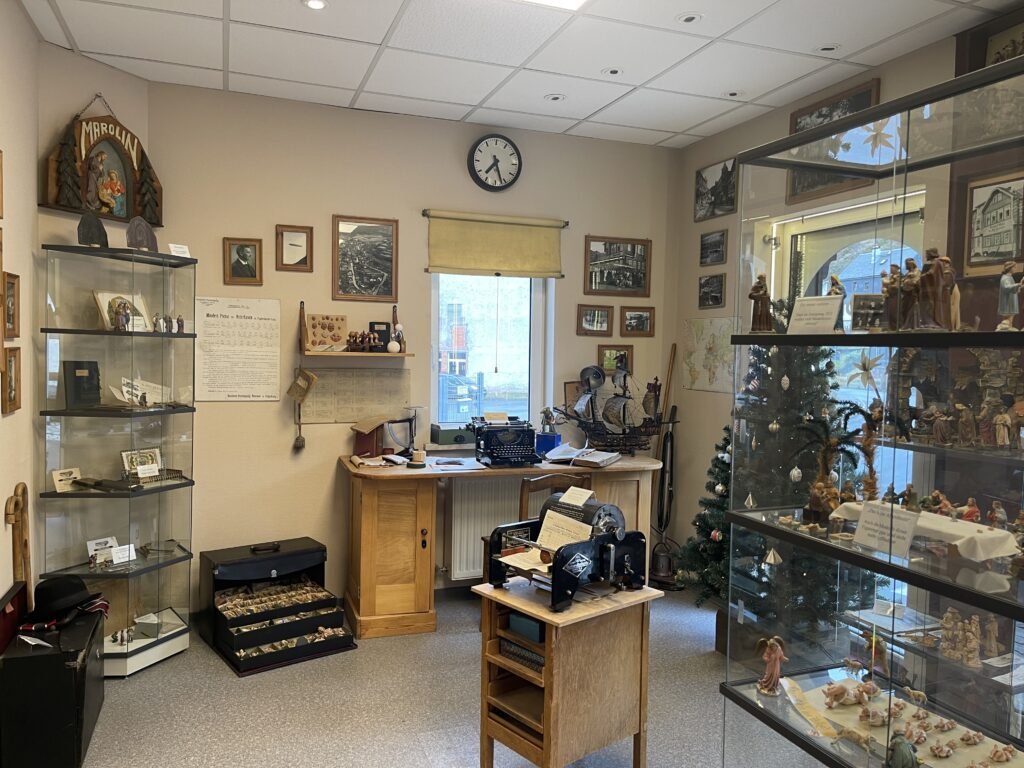
After losing the family business to the communist regime of East Germany in 1972, the family regained ownership of Marolin in 1990 and restarted the production of paper mache figurines.
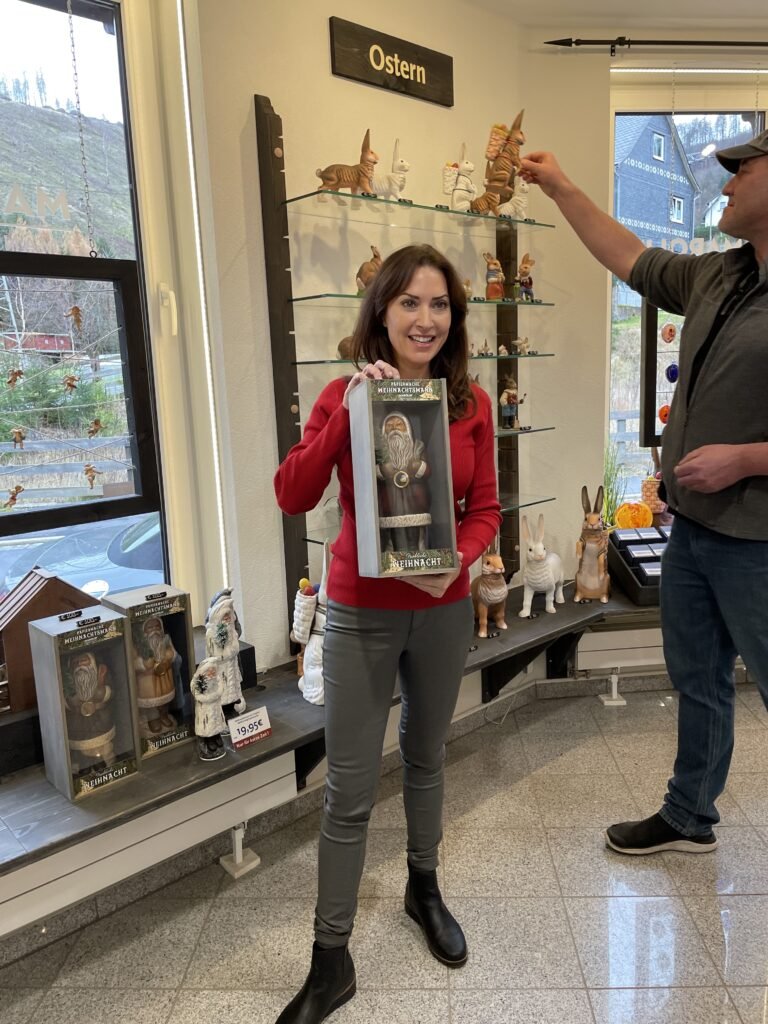
Today, Marolin’s figurines are sold worldwide, including exclusive special edition Santas available at select HomeGoods stores throughout the United States.
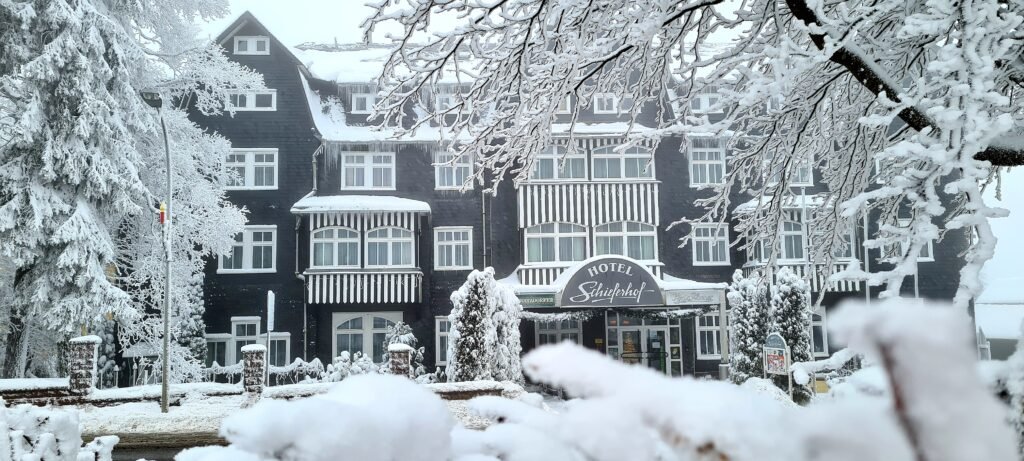
A Stay at Hotel Schieferhof: Immersed in Local Artistry
During my trip, I had the pleasure of staying at the Hotel Schieferhof in Neuhaus am Rennweg. This boutique hotel was named after the local stone Schiefer. The half-timbered slate house was built in 1908 as housing for industrial workers and changed ownership throughout its history.
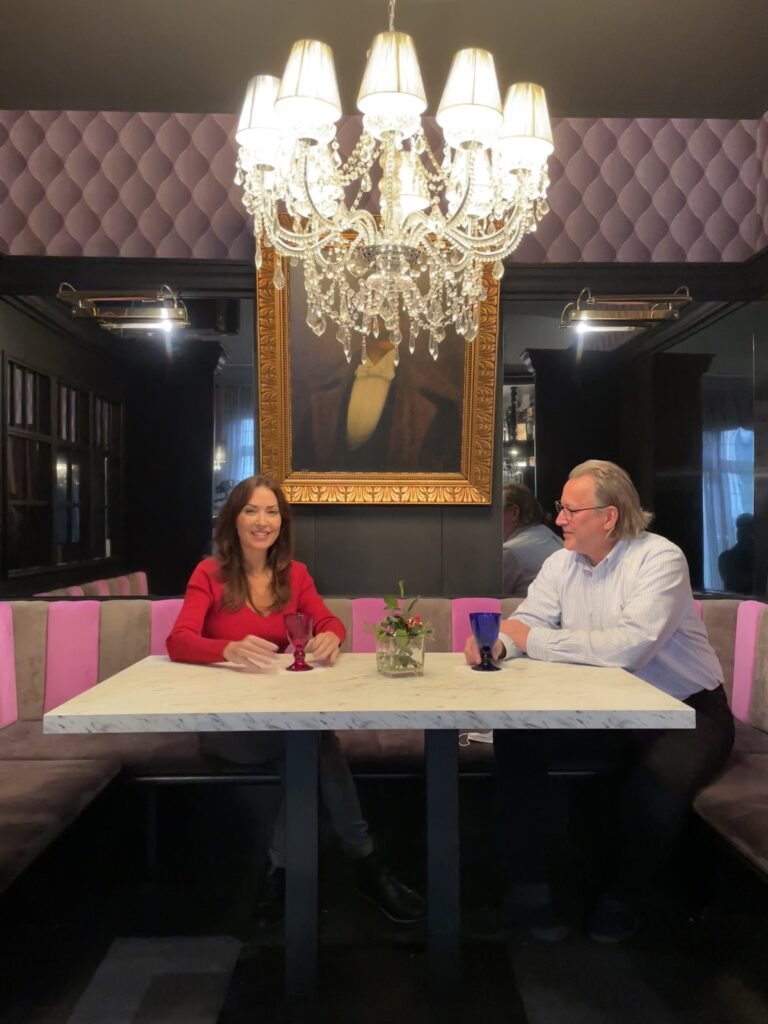
In 1994, Lutz and Rita Horn purchased the property and turned it into a boutique hotel that connects guests with local artisans.
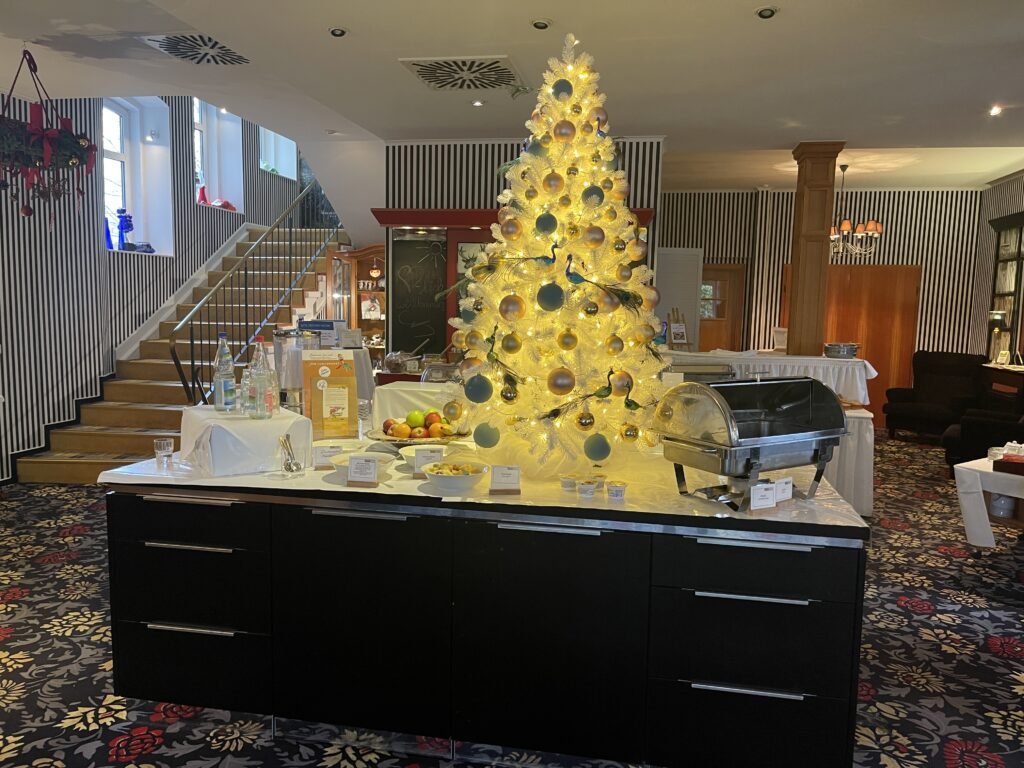
The hotel is centrally located to explore the neighboring villages and workshops. Every space is a dance of bright, whimsical colors on the walls, furnishings, and lighting, creating a playful, happy vibe.
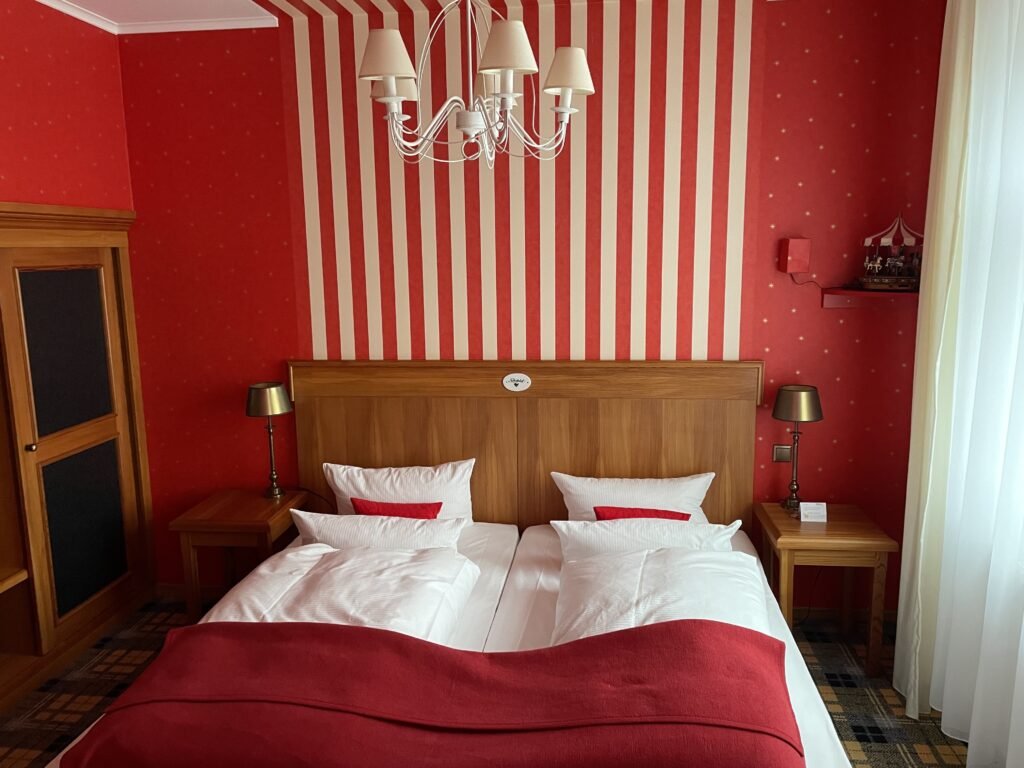
Each hotel room’s decor tells a story tied to a theme.
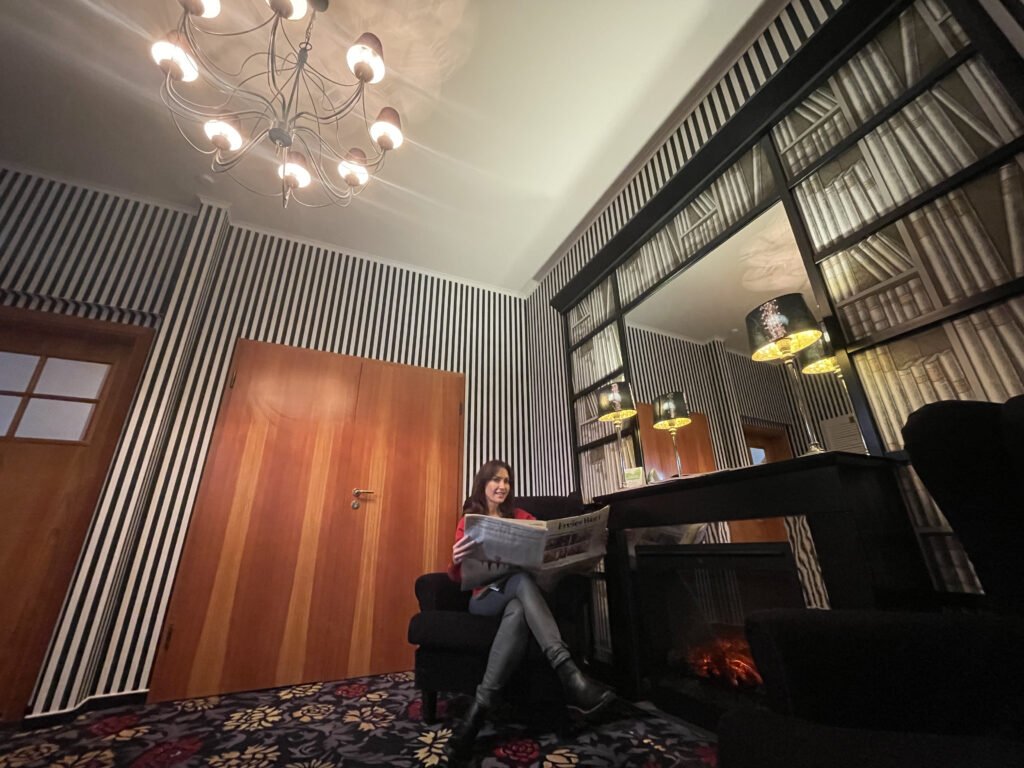
A Celebration of Tradition and Artistry
Lauscha Germany, is not merely a destination; it’s a celebration of tradition and artistry. The glassblowing legacy, revived after historical challenges, stands tall, welcoming visitors to witness the magic of craftsmanship. From mouth-blown glass ornaments to handcrafted paper mache figurines, every piece tells a story of resilience and passion.
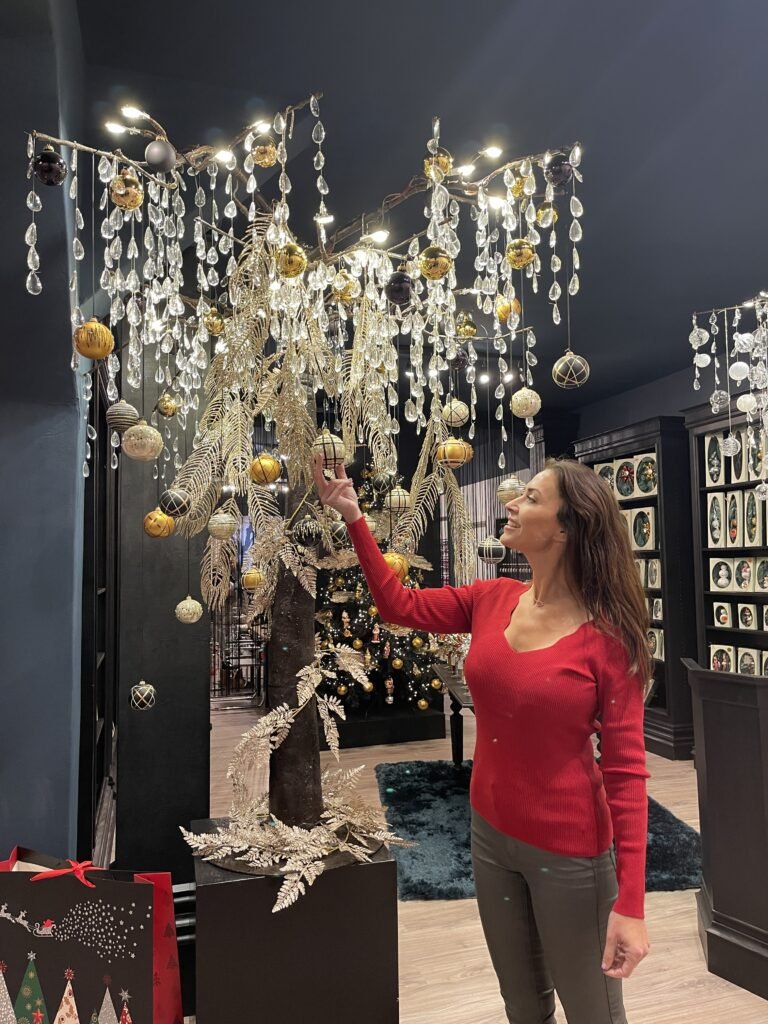
My journey through the Thuringian Forest left me with deep admiration for the talents and dedication of its craftspeople. Lauscha’s traditional handicrafts, once hidden from the world during its years as part of communist East Germany, now invite everyone with a warm embrace.
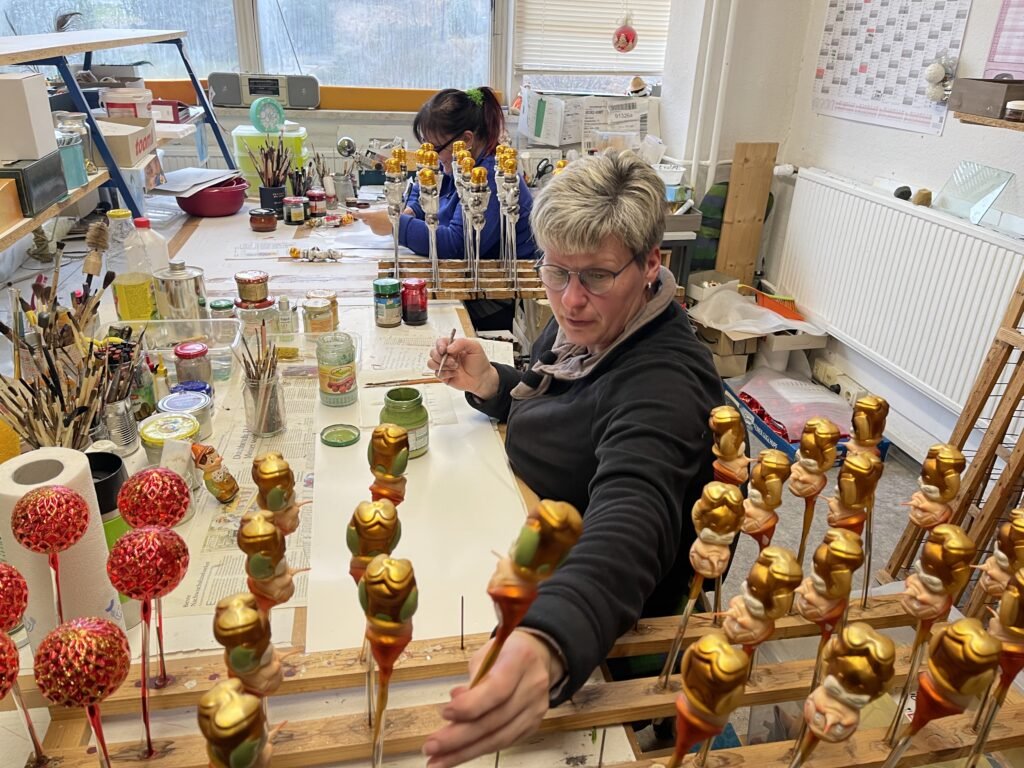
For more on my travels throughout the Thuringian forest, watch The Design Tourist travel series streaming on major networks and on YouTube.
FAQs About Lauscha and Its Crafts
-
What makes Lauscha Germany glass unique?
Lauscha Germany glass is known for its distinctive green tint, a result of the rich iron content in local sand and tiny embedded bubbles. This uniqueness has contributed to the worldwide fame of Lauscha’s glass Christmas ornaments.
-
How did Lauscha’s glass ornaments gain international recognition?
In the 1880s, Lauscha glass Christmas ornaments found their way into Woolworth stores, discovered by Mr. F.W. Woolworth during a visit to Germany. This marked the beginning of their international acclaim.
-
Where can I experience the art of glassblowing in Lauscha?
To witness the art of glassblowing in Lauscha, visit Krebs Glas Lauscha with its showroom, store, and workshop, offering glassblowing demonstrations for visitors.
What to know if you go to Lauscha Germany:
The region has launched a tourism initiative, Christmas Country on the Rennsteig®, aimed at promoting and preserving the traditional crafts of the Thuringian Forest. To plan your trip to the region, I suggest the website https://www.lauscha-glaskunst.com/
Shopping for local design finds is a great way to connect with local artisans and culture. For Christmas ornaments, I suggest a visit to Krebs Glas Lauscha with a showroom, store and workshop where you can watch glassblowing demonstrations.Check it out at https://www.krebslauscha.de/
For a large selection of locally made items, stop by the Thuringian Forest Shop located in the town of Rennsteig, in the middle of the Thuringian Forest. The store sells regional specialties and craftsmanship from Thuringia. Here is the store website www.thueringer-wald.shop
For Thuringian glass, visit The Glass Center Lauscha, which manufactures free-form forest glass in that signature green tint, including bottles, vases, jugs, bowls, cups and ashtrays. Here is the link to learn more, https://www.glaszentrum-lauscha.de/.










